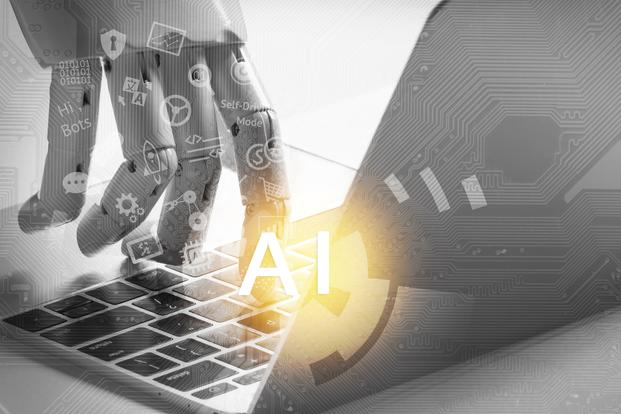Intelligence gathering in future will take more than drones.
Monitoring and mining social media in real time via an automated artificial intelligence is another way the Air Force and other military branches can obtain information, the head of the service said Wednesday.
"When the Russians shot down the airliner, and we were searching for the smoking gun, we found it a month later -- on Facebook," Air Force Chief of Staff Gen. David Goldfein said, referring to Malaysia Airlines Flight 17, which was shot down over Ukraine in 2014 by pro-Russian separatists using a Buk surface-to-air missile system. All 298 aboard died.
"We found posted pictures on Russian blog sites that actually showed the activity, but it took us a month to figure that out," Goldfein told the audience at an Air Force Association breakfast in Washington, D.C. "The future is going to be far faster than that."
He continued, "It's coming from social media, and it's coming at a speed that's actually faster than sometimes we can get from some of our more exquisite intelligence collection capabilities."
Related content:
- Air Force's New Intelligence Chief Explains Vision for Future of ISR
- This Command Center Keeps Air Traffic Away from Mar-a-Lago
- A Closer Look at the Russian Buk SAM Implicated in Airline Crash
- Strike on ISIS Drone Cell Highlights Airman's Novel Intel Methods
The general said he recently visited software and data company Bloomberg in New York City and viewed its latest "search engine technology," which was able to search "the level of violent extremist activity in the last 48 hours."
"So [an analyst] typed it in, and hit enter. And I watched as a map populated with little circles, and all of it from real-time analysis of Twitter, with corresponding values associated with each account relative to how they automate the ability to determine whether this Twitter report is actually mirrored by others."
The Air Force on some level does monitor social media already. The service's only non-offensive air operations center, known as "America's AOC" at Tyndall Air Force Base, Florida, keeps tabs -- but sparingly.
Col. Robert Bloodworth, chief of combat operations, explained to Military.com during a trip to the base in March that the 601st AOC sometimes is tipped off by news segments before an official alert comes through. When asked if the AOC monitors social media websites such as Twitter for tips, Bloodworth said they do not have a specific person tasked with monitoring Twitter traffic, but do check it after specific events.
But social media is just one aspect. Goldfein on Wednesday reiterated that, like the Bloomberg tech, "refining the analysis" through AI to reach the operator, pilot or airman in a decisive and streamlined way is what the Air Force desperately needs to conduct missions in the future.
In February, Military.com spoke with Lt. Gen. VeraLinn "Dash" Jamieson, the service's deputy chief of staff for intelligence, surveillance and reconnaissance on the Air Staff at the Pentagon, known as the A2, who has begun a developmental phase in what she believes will take intelligence gathering into the future.
"Before you get to artificial intelligence, you have to get to automation, and what does that mean? It means we're really developing algorithms, so we then have to build trust in the algorithms," Jamieson said during an interview.
"For example, ISR ops, or intelligence. Or pick space, cyber, any operator of those -- we sit down and go, 'We want facial recognition. Here's how we're going to build the algorithm.' Test it, [see] if it works. Then we can go, 'Machine, here's the algorithm' ... Then we can say, 'Artificial intelligence, I need to take this algorithm, [plus] here was the old pattern of life, which is a projection, where are you taking this in a sensing grid?' " she explained.
Jamieson added, "Artificial intelligence is really going to be linked with human and machine getting me to projections and where it can go to eliminate 20 billion faces, let's say, to the one in the nanosecond."
Goldfein acknowledged, "We all know there's a significant number of data that we collect that hits the floor that we never actually look at because we don't have the analytical capacity … to look at it."
"What all the services are heavily leveraging -- and looking at industry as well for support -- is how do I take that very human-centric methodology that we have today and use artificial intelligence that uses automation that uses some of the tools that are available to be able to do that kind of analysis?" Goldfein said.
"This marriage between where industry is going and the innovation that we see coming out, and where there are military applications to allow us to do the kind of conflict in the future, is as exciting as anything else I'm looking at," he said.









